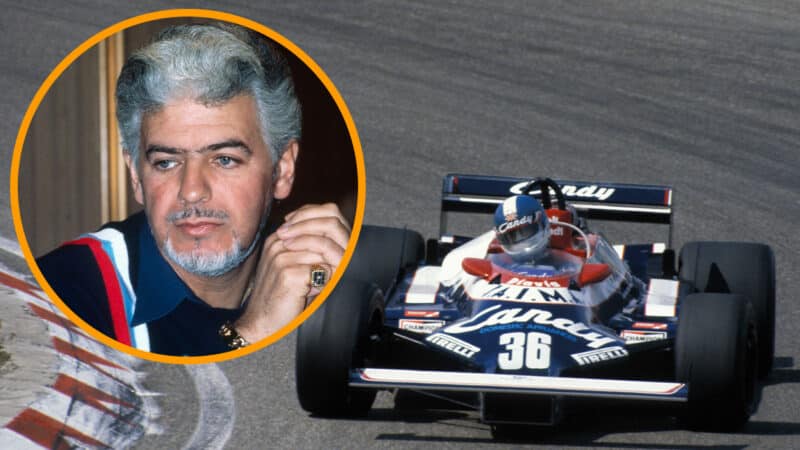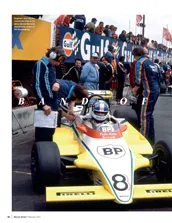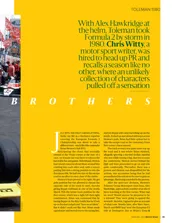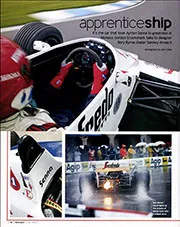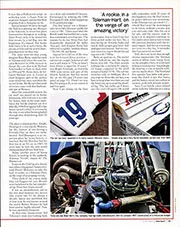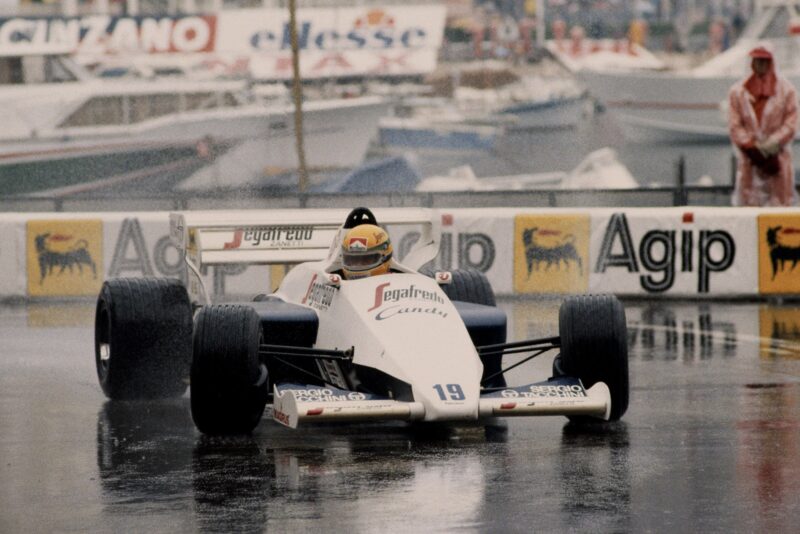A near-miss title defeat in 1979 and a dominant campaign in 1980, in which Brian Henton took the title followed by team-mate Derek Warwick, was the catalyst that prompted the team to enter F1 in 1981.
The team retained both Henton and Warwick as their drivers. Rory Byrne was already on board as the team’s chief designer and Symonds was soon hired as his partner. It was a dream team in the making — with Ted and Alex Hawkridge (Toleman’s managing director) at the helm — but the world just didn’t know it yet.
“I was actually just about on the point of thinking that I wasn’t sure whether motor sport would ever pay the bills,” says Symonds, now Formula 1’s chief technical officer after stints at Benetton and Renault. “Suddenly, here are these guys who lived a pretty good life and they wanted to go into Formula 1. They were talking about how they were going to do it properly and needed someone a bit more academic. It was pretty damn attractive and I was happy to join them.”
In an effort to make the leap to F1, Symonds and Byrne applied a lot of “lateral thinking” to their first creation — the TG181 — which also carried over to the engine, designed by Brian Hart. It was effectively a turbocharged version of the highly successful F2 unit the team had used in 1980. But when the time came to go racing, almost every component fell short of the team’s own expectations — as well as Ted’s. The car qualified for just two grands prix in 1981, and at some venues it was as much as seven seconds off the lead pace.
“The idea that we could produce a four-cylinder turbocharged engine for five bob that would would match what Renault and Ferrari were ploughing into it was crazy to think, says Symonds. “Just because we’d been successful in F2, we thought we could just bring the same ideas into F1 and everything would be great. It was lateral thinking, but it was naive lateral thinking.”
The team suffered heavily throughout its first campaign in F1 as a result and, and having poured significant personal resources into the project, Ted was understandably “demanding” and “irritable” when things weren’t going well.
“You’ve got to remember we’d come from a season where we dominated F2 — or at least the chassis did,” says Warwick. “We’d come off a good season in ’78 and ’79 with Brian Henton, so he was used to results. Then we went to Goodwood to test the Hart engine with a twin turbo in the F2 car and it really went like a rocket.
“Ted was there for that and he got caught up in the whole excitement of us dominating F1. Then when 1981 came — and the reality as well — it was very much a disappointment for everybody but also for Ted because he was a winner.”
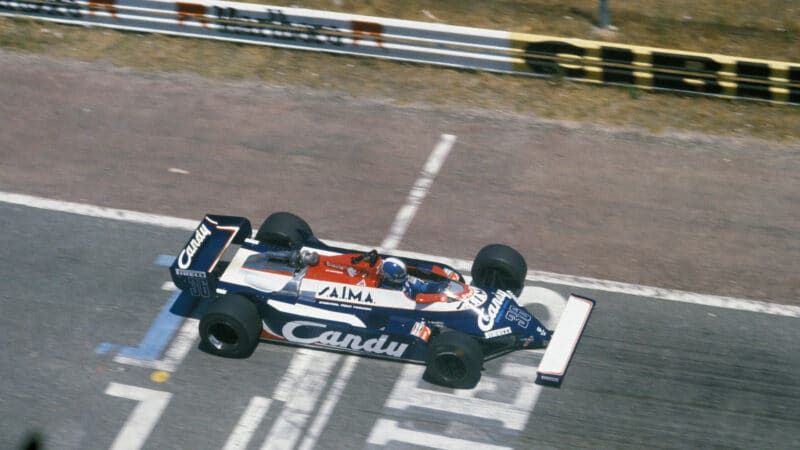
The Toleman TG181 at Jarma — where it would fail to qualify
Grand Prix Photo
Ted soon went in search of answers and was told that the team’s lack of pace was mainly due to the road-going turbocharger that had been strapped to his F1 engine. Despite his generally laid-back approach to team ownership — usually choosing to let Hawkridge run his F1 outfit while he watched from the sidelines — Ted went about sorting out this problem himself.
“The top teams had been using KKK turbochargers,” says Symonds. “We absolutely couldn’t get those. Ted hardly ever visited the factory or got involved with the car itself but he was the guy who very much persuaded Holset, a British company which was making truck turbochargers at the time, to make us a F1 turbocharger at a fraction of the cost.”
The improved pace of the newly turbocharged engines brought the team to new heights of competitiveness in the latter stages of 1982, and a “new interpretation of the rules” in 1983 suddenly turned Toleman from a perennial backmarker and regular non-qualifier to a trend-setting F1 outfit with the TG183.
“We came out with a new chassis and a new way of mounting the engine,” recalls Warwick. “All of a sudden, although we didn’t ultimately have the reliability to start with, the car was qualifying, we were competitive mid-grid and at the end of the year I was the only driver to score points in the last four grands prix.”
“[After that finish to the season] Ted opened his pockets and we partied like you cannot believe. We enjoyed the moment. Toleman was a very close-knit team that would die for each other. They respected commitment. I gave 110%, they gave me 110%. Ted might not have been the architect to the car — involved in all the nuts and bolts — but he was still very much the figurehead.”
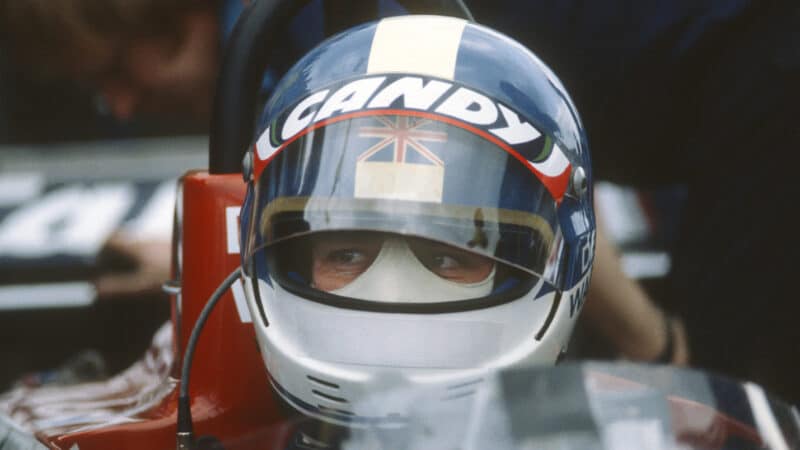
An improved 1983 season saw Warwick score points in the Netherlands, Italy, Europe and South Africa
Grand Prix Photo
Despite a close bond that had been built from his F2 days, Warwick chose “head over heart” in 1984 and left Toleman for Renault — a decision which was quickly proved the right one after he secured a podium finish in just his second race with the French outfit. But his admiration for Toleman and Ted remained absolute. While standing atop his first F1 podium, Warwick looked down to see his “Toleman boys” cheering him on beneath him.
Respected within the F1 paddock, Ted also carried an air of intrigue, thanks to his activities away from the track that included powerboat racing, sailing, and competing in the Dakar, as well as other rumoured exploits.
“Ted was a lovely guy,” says Warwick. “He had a heart of gold and he was very flamboyant. There was talk of him injecting monkey glands into his body to keep him young. Whether that’s true or not, I have no idea.
